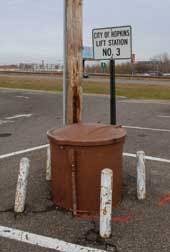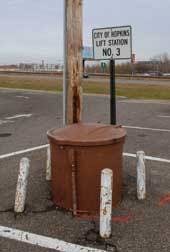Hopkins, MN, occupies four square miles in south central Minnesota, and is home to 17,000 residents. The area is also home to seven lift stations. The oldest station, simply referred to as “number three”, has been operating without incident since it came into the city’s possession in 1967.
According to Mike Lauseng, former Superintendent of Hopkins’ Water and Sewer Division (HWSD). “Judge Carroll was the original owner of the lift station. When he didn’t want to maintain it any longer, he sold it to the city of Hopkins for one dollar to clear off his books.”
Lauseng, a lifelong resident of Hopkins who recently retired, had one objective as superintendent - to keep the lift stations operating trouble free, so local residents can go about their normal lives.
“The whole key to everything we do is to keep everything running so we don’t inconvenience anybody in town,” he said.
The number three lift station- originally installed to service a new restaurant - was the Gorman-Rupp Company’s first ever lift station, bearing the serial number “A-001”. The station was constructed of fiberglass reinforced polyester (FRP), which can withstand many of the elements that damage lift stations built from other materials. One major factor in the decision to use FRP for the lift station was its ability to withstand hydrogen sulfide.
Years after construction, a second restaurant was built on the land next to the original and it too was serviced by the number three lift station. The new restaurant - a fast food location - greatly increased the amount of wastewater flowing into the lift station. Even with the increased workload, the station’s Gorman-Rupp T3A3-B pumps have performed flawlessly for 40 years.
“It’s a less than ideal situation for a lift station to have to operate with two restaurants coming into it. But, it has done a great job,” Lauseng said.
In the 40 years it has been operating, the restaurants served by lift station number three have changed numerous times. But the condition of the station itself has remained the same, largely because the FRP is easily maintained and washed, and never needs painting.
“Because it is a fiberglass station with a gel coat on the inside, the inside of it looks as nice now as when it was installed,” said Ray Anderson, a Distributor’s Representative from General Repair Service of Vadnais Heights, MN. “There’s no corrosion on it at all.”
Four Decades of Pumping
The lift station incorporates two Gorman-Rupp T-Series pumps - one standby and one on call that automatically alternates at the end of every pump cycle. When wastewater enters the lift station from one of the two restaurants, it is held in a wet well until it reaches a predetermined level. At that point, the pumps activate and send the wastewater out a 4-inch main, beneath the Minehaha Creek, to a manhole discharge along Hiawatha Avenue.
When the lift station was constructed in 1967, float switches were used to activate pumping and analog gauges registered pressure differentials. However, as time went on, it became necessary to update certain aspects of the operation to meet ever-changing technological demands.
In the early 1990s, the lift station was retrofitted with a new Supervisory Control and Data Acquisition (SCADA) control panel from Gorman-Rupp. Contained in the system is a computer housed in the lift station’s meter room that is programmed to respond to alarms in the station by continually calling a prearranged list of crewmembers until someone acknowledges the alarm. The system also records the number of hours the pumps are in use and allows data such as flow, pressure, and voltage to be monitored via telephone, radio signals and the Internet.
A switch to the Gorman-Rupp Super T-Series pumps would offer a variety of features - such as easier adjustment of the pump’s impeller clearance and sight glass to view oil levels. However, with the lift station operating so efficiently, Anderson sees no need for a change or upgrade to the station’s mechanical equipment.
“There is no reason to update the Gorman-Rupp pumps - not as long as they’re running as well as they are,” he said.






